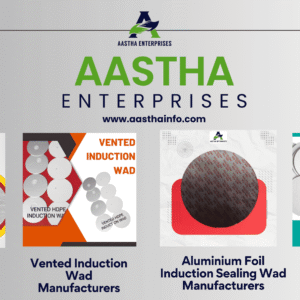Introduction
Agriculture has been the backbone of human civilization for thousands of years, but the arrival of the tractor transformed farming more dramatically than any innovation before it. Today, the tractor is more than a machine used to till land—it is a multifunctional powerhouse capable of performing dozens of tasks that once required extensive manual labor and time. As rural landscapes continue to adopt digital tools, smart systems, and advanced mechanization, the tractor remains at the center of agricultural growth. With modern upgrades, increased fuel efficiency, and intelligent functionality, tractors are now essential not only for large-scale farmers but also for small and medium agricultural enterprises. This article explores the evolution, types, uses, technological advancements, and future potential of the tractor in shaping global agriculture.
The Evolution of the Tractor: From Steam Power to Smart Machines
The journey of the tractor began in the late 19th century when steam-powered engines were introduced as alternatives to animal labor. These early machines were bulky, difficult to maintain, and expensive, making them accessible only to wealthy landowners. However, the introduction of internal combustion engines revolutionized tractor use. Manufacturers began producing machines that were smaller, more powerful, more fuel-efficient, and easier to operate.
By the mid-20th century, the tractor had become a global farming essential. Mechanization spread rapidly due to its ability to reduce time spent on manual labor, improve productivity, and enable farmers to cultivate larger areas. Today, tractors have evolved into advanced agricultural machines equipped with ergonomic designs, GPS guidance, automated systems, and environmentally friendly engines.
Types of Tractors and Their Farming Applications
Modern agriculture relies on a wide variety of tractors designed for different terrains, purposes, and farming sizes. Understanding the types helps farmers select the right machine to enhance efficiency.
- Utility Tractors
Utility tractors are the most commonly used machines on farms. They are versatile and capable of performing several tasks including plowing, pulling implements, transporting materials, and operating attachments such as loaders or backhoes. Medium horsepower and durable designs make them ideal for general farm operations.
- Row Crop Tractors
Row crop tractors are specially designed for planting, cultivating, and harvesting row crops like maize, wheat, and vegetables. Their adjustable wheel spacing and advanced hydraulic systems make them highly effective for precision farming.
- Orchard Tractors
These tractors are narrow, compact, and maneuverable, designed to operate between tight rows of fruit trees or vineyards. They offer high clearance to avoid damaging plants while maintaining enough power for orchard-specific tasks.
- Garden Tractors
Smaller than utility tractors, garden tractors are often used by homeowners for lawn maintenance, landscaping, or small-scale gardening tasks. They may be equipped with mowing decks, small trailers, or snow removal attachments.
- Four-Wheel Drive Tractors
4WD tractors are used in heavy-duty agricultural work such as deep plowing and hauling large loads. They provide better traction, stability, and control, especially on rough terrains or muddy fields.
- Mini Tractors
Mini tractors have gained popularity among small farmers and horticultural businesses. Their low operating costs and compact size make them ideal for narrow fields, inter-cropping, and small farms.
Essential Functions and Uses of Modern Tractors
The true value of a tractor lies in its ability to handle multiple tasks with efficiency. Some of the most important uses include:
Land Preparation
Tractors help plow, harrow, level, and prepare soil for planting. This reduces manual labor and speeds up the process significantly.
Planting and Seeding
Planters and seed drills attached to tractors enable uniform seed distribution, improving crop germination and yield quality.
Crop Maintenance
Modern tractors support various attachments used for spraying fertilizers, pesticides, and water. Accurate application reduces wastage and improves plant health.
Harvesting Assistance
Although specialized harvesters exist, tractors can tow harvesting machinery or transport harvested crops from fields to storage facilities.
Transport and Haulage
Tractors are widely used to haul trailers loaded with produce, equipment, or raw materials. This is especially crucial in rural areas where transport infrastructure may be limited.
Construction and Land Development
With attachments like loaders and backhoes, tractors are used for digging, lifting, moving soil, and performing small-scale construction tasks on farms.
Technological Advancements Transforming the Tractor Industry
The last two decades have brought rapid transformation in the agricultural machinery sector. Today’s tractors are smarter, more fuel-efficient, and designed to optimize productivity.
- GPS and Precision Farming
GPS-enabled tractors provide accurate field mapping and auto-steering capabilities. This reduces human error, saves time, and ensures uniform field operations like planting and fertilizing.
- Emission-Friendly Engines
To reduce pollution, manufacturers now produce tractors with engines that comply with stringent global emission standards. Many models use cleaner fuels or hybrid technology.
- Telematics and Remote Monitoring
Farmers can monitor fuel levels, engine performance, field progress, and machine health from a mobile app. Predictive maintenance prevents breakdowns and reduces repair costs.
- Autonomous Tractors
Self-driving tractors are no longer science fiction. Companies are testing autonomous machines that perform fieldwork with precision, reducing the need for manual operation.
- Smart Attachments
Modern implements use sensors, hydraulic adjustments, and advanced materials that reduce effort and improve efficiency. Farmers can change attachments quickly to perform multiple tasks with the same tractor.
Benefits of Using Tractors in Agriculture
The advantages of using a tractor extend beyond time savings. They contribute to overall farm sustainability and improved yield.
Higher Productivity
Tractors reduce the number of laborers required and complete tasks faster, enabling farmers to cover larger fields.
Cost Efficiency
Although the initial investment may be high, tractors reduce long-term operational costs through lower labor expenses and increased harvest output.
Consistency and Accuracy
Machines deliver uniform results, ensuring better crop quality and improved farm management.
Year-Round Use
Tractors can be used throughout the year for various tasks—cultivation, harvesting, transportation, and field maintenance.
Better Soil Management
Modern implements attached to tractors help in reducing soil compaction, improving aeration, and maintaining soil health.
Challenges Farmers Face When Using Tractors
While tractors have transformed farming, certain challenges remain:
- High purchase cost, especially for small farmers
- Fuel expenses and maintenance needs
- Training requirements for safe operation
- Dependence on spare parts availability
- Environmental impact of older diesel engines
Governments and organizations are addressing these issues by offering subsidies, training programs, and promoting greener technologies.
The Future of Tractors: Smarter, Greener, and More Efficient
The future of the tractor industry lies in automation, artificial intelligence, and sustainable energy. Electric tractors are already entering markets, offering quiet operation and zero emissions. Fully autonomous tractors powered by AI will soon become mainstream, enabling farmers to manage operations remotely. With continuous innovation, tractors will become more intuitive, energy-efficient, and farm-friendly, supporting the global demand for food production.
Conclusion
The tractor has come a long way from being a simple mechanical machine to becoming an intelligent, multifunctional farm partner. Its role in modern agriculture is unmatched, enabling farmers to increase productivity, reduce workload, and improve crop yield with precision. As technology continues to advance, tractors will remain crucial contributors to sustainable farming and global food security. Whether it’s a small horticultural field or a large commercial farm, the tractor stands as the backbone of efficient agricultural operations—and its importance will only grow in the years ahead.


